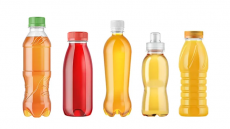Does Eco-Score create a halo effect?

In many ways, eco-labelling is just as contentious a subject as its nutritional counterpart. While many key stakeholders believe that they will nudge consumers in the right direction, it is also argued that their significance can be easily overstated. Some guidelines have even been labelled ‘misleading’ by non-profit organisations, sparking further debate.
One key question remains: do they influence consumers enough to change their views of a product?
A recent study published in the journal Food Quality & Preference looked at the effect that Eco-Score – an eco-labelling scheme used in a similar way to Nutri-Score for nutritional labelling – had on consumer perceptions of products using it, and their eventual buying decisions.
Using Eco-Score on products on products can, according to the study, impact consumer perceptions of a product positively in ways that even the creators of Eco-Score may not have bargained for.
How does the Eco-Score impact consumer perception?
The study explored how using Eco-Score impacted consumer perceptions of a range of attributes, including environmental friendliness, tastiness and healthiness.
What is Eco-Score?
You’ve heard of Nutri-Score? Eco-Score gives products a similar rating, on a scale of A (green, low environmental impact) to E (red, high environmental impact). Developed in France by the Eco2 Initiative in 2021, the front-of-pack labelling system aims to ascertain the environmental impact of a product. Eco-Score centres around a life-cycle assessment (LCA) of a product, with other factors taken into account and points added or deducted for these. As well as France, the labelling system has been used in Belgium and Germany.
The researchers created three fictitious products – spaghetti, strawberry yoghurt and crisps – and analysed whether consumers’ perceptions were affected by the presence of Eco-Score on the packaging.
Consumers in Germany were shown these products in a random order: some labelled Eco-Score A, some Eco-Score C, and some Eco-Score E.
Participants were asked to assess their perception of the environmental impact of the product on a seven-point scale. Alongside this, they were also asked how they perceived its healthiness and tastiness.
In environmental terms, the Eco-Score had the desired affect on all three products, as all three were perceived as more environmentally friendly when given Eco-Score A rather than E.
However, the positive perceptions associated with Eco-Score did not end at its impact on perceptions of environmental friendliness. Products labelled with Eco-Score A were generally perceived as tastier than those labelled with Eco-Score E, despite the fact that Eco-Score has nothing to do with taste!
The correlation between Eco-Score and perceptions of health was even clearer. Consumers perceived products labelled with Eco-Score A as healthier than those labelled with Eco-Score C, which in turn were seen as healthier than those labelled with Eco-Score E.
The Eco-Score’s influence extends beyond the boundaries of its remit as a sustainability label. It has influenced consumer attitudes towards other aspects of a product. It has, as the researchers hypothesised, the halo effect.
What is the halo effect?
The halo effect, in the context of food packaging, is when a certain claim can provoke within a consumer positive cognitive bias unrelated to the labelling in question. For example, eco-labelling could provoke a positive association with health. Its inverse, or dark mirror, is the Devil-horns effect, where one negative characteristic can tarnish consumer perception of a whole product. The reverse-halo effect is when a characteristic perceived as positive, such a certification scheme label for example, leads to negative perceptions of attributes such as taste.
In order for the halo effect to occur, consumers have to understand the original intention of the labelling. In the context of this study, they have to understand that the purpose of the Eco-Store is to assess environmental impact.
Furthermore, Eco-Score E was shown to have a more significant negative impact on perceptions than the positive impact of Eco-Score A, potentially suggesting that negative labelling is more effective than positive.
How does the Eco-Score impact purchase intentions?
Alongside consumer perceptions of the product, purchase intentions were also measured, again on a seven-point scale.
Those who perceived a product as more environmentally friendly, due to Eco-Score A, were likely to have a higher purchase intention than otherwise, with Eco-Score E leading to a lower purchase intention.
Eco-Score E was also shown to have a negative impact on purchase intention when linked poorly to perceived tastiness and perceived healthiness.
Sourced From: Food Quality & Preference
'Does the Eco-Score lead to a halo effect? Influence of a sustainability label on product perceptions and purchase intention'
Published on: 26 June 2024
Doi: https://doi.org/10.1016/j.foodqual.2024.105246
Authors: V. Büttner, B. Gassler, R. Teuber




















